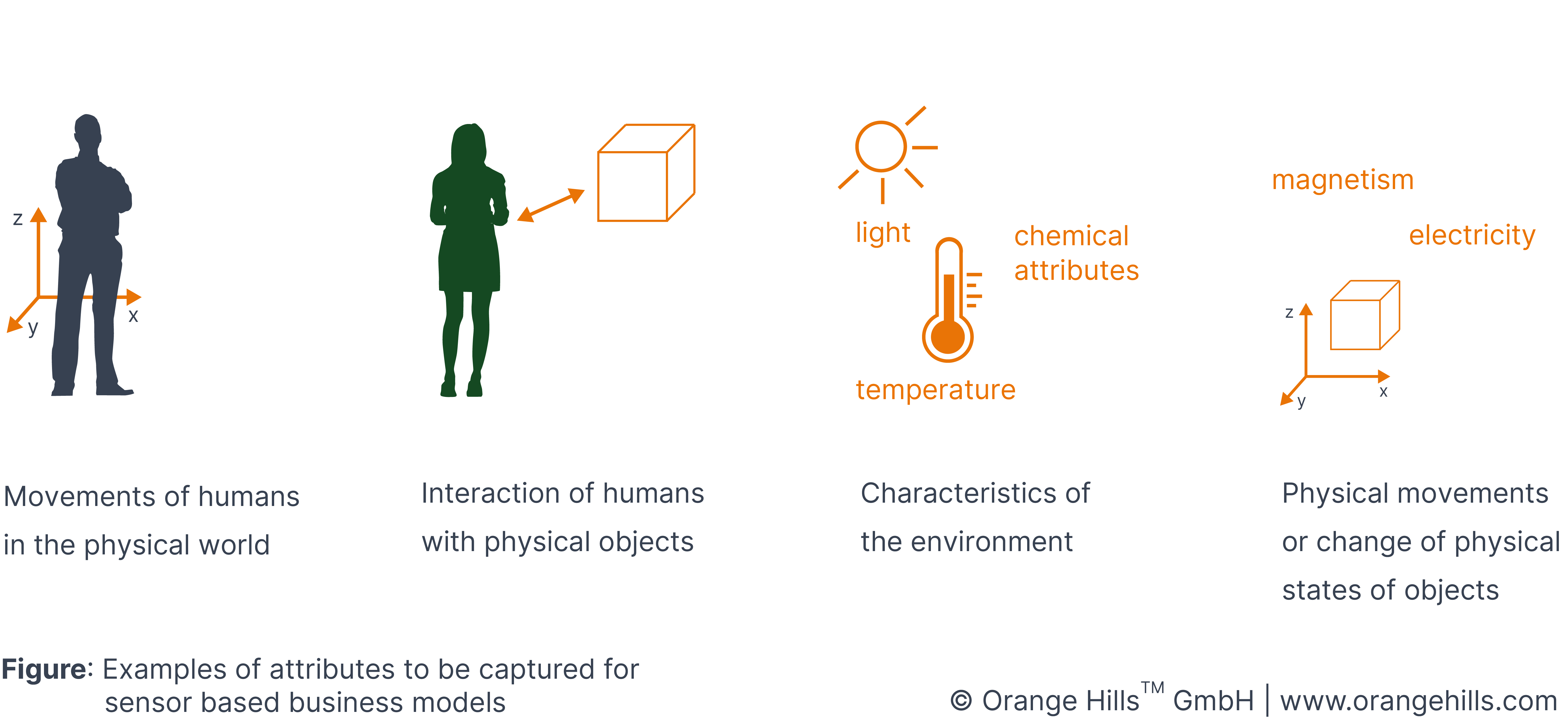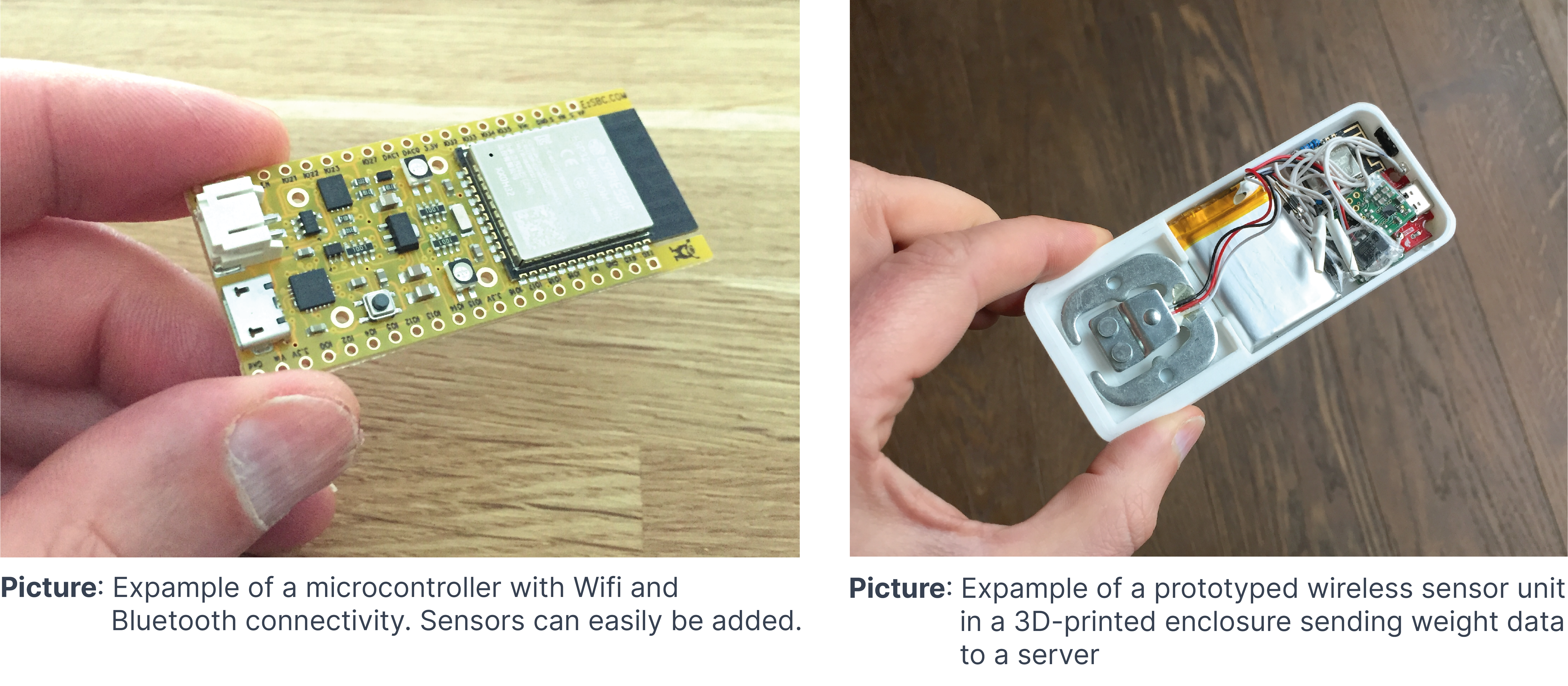IoT Prototyping
Business models may be based on how humans move in space or how objects move in space or in relation to other objects or humans. To realise these kind of business models we need a bit of technology to track these movements. In this chapter we take a look at ways to quickly prototype this specific aspect of business models.

Kai Dierkesmann
Business Design Coach
Content
1. Purpose
In short, IoT based offerings do not necessarily have to be prototyped with IoT technology. Analog to other prototyping disciplines aspects of a future IoT offering can be prototyped in different levels of reality, using the same techniques as described in Prototyping Physical Products and Software Prototyping.
At a certain point however, we want to understand how it will work to connect a physical object with the digital world. And in more advanced experiments we usually want to let customers experience our offering. In the case of offerings or business models that are based on physical attributes such as movements, electrical currents, light intensity or other, we need sensors to capture the characteristics of these attributes.

In Business Design we want to create evidence of the validity of future business models as soon and as lean as possible. Technical feasibility or acceptance of sensor based business models can be crucial uncertainties which need to be tested in experiments with the help of prototypes.
Just as in other prototyping disciplines we need to be very precise what it is that we want to find out through an experiment. Usually, when IoT Prototyping comes into play some questions have been clarified already with other, less demanding kinds of prototypes. IoT Prototypes are a bit more complex than for example a Landing Page, a Click-Dummy, a CAD model or a product rendering. IoT Prototypes are functional prototypes that allow us to test hypotheses of sensor data based business models.
2. Types
The types of IoT Prototypes are distinguished by their purpose. Either we aim at validating technical hypotheses such as "we believe that we can measure the motion of a specific component of construction machine and draw conclusions regarding specific states of usage". Or, we aim at showing potential customers in a high level of reality how our sensor data based business model works. Another purpose for IoT Prototyping is to facilitate a MVP or MMP in the leanest possible way.
IoT Prototypes for Internal Use
If a technology such as specific sensors or transmission will be used in a certain setting and if we have nowhere to learn from if this really works, we often build rudimentary prototypes to validate the feasibility of specific aspects. These kinds of prototypes do not look nice (they don't need to, because they remain within the team).
These prototypes help to clarify questions like
"Can we use commonly available sensors and electronics to collect and transmit the data?"
"Will collecting and transmitting data work in the specific environment?"
"Is the quality of aggregated sensor data good enough to draw conclusions from it?"
Prototyping Cheat Sheet
Purpose: clarify technical feasibilities, create believe in the team
Recipients: team, sponsor
Tools: sensors, mikrocontrollers, software to build dashboards
Fidelity / level of reality: low in technological fidelity, medium level of reality
Learning method: Technical Exploration
IoT Prototypes for Interaction with Customers
As soon as we have clarified that the technological side could basically work, we want to push on and get into interaction with customers as soon as possible. Therefore we build upon the prototypes for internal use, join single components into one fully functional system. Pure technology itself looks appealing to tech nerds, but not to potential customers. We therefore quickly build nice looking enclosures or integrate the electronics into a physical mock-up of a product. We can also integrate the electronics into a physical prototype e.g. a 3D-print, a clay or wood model.
These kinds of prototypes help to clarify questions like
"Do potential customers see a value in our idea?"
"Will potential customers commit in any way to use our offering?"
"Are there any things that our potential customers say we need to change immediately?"
Prototyping Cheat Sheet
Purpose: Validate value for customers
Recipients: customers, investors
Tools: sensors, microcontrollers, Tools for Prototyping Physical Products, software to build dashboards
Fidelity / level of reality: high in terms of visual aspects, medium to high in technological fidelity
Learning method: Interview with Prototype, Silent Observation
3. Components of IoT Prototypes
A functional IoT prototype is based on the two disciplines of Prototyping Physical Products and of Prototyping Software. A functional IoT Prototype connects the physical with the digital world and usually consists of these parts:
Hardware (a physical prototype of a product or a simple enclosure for electronics)
Electronics (sensor, microcontroller, connectivity, battery)
Embedded software (software that tells the sensor and microcontroller what to do)
Software for data analysis and user interface (such as dashboards or in general UIs)

4. Participants
5. Tools & Materials
See Tools for IoT Prototyping for an overview
Business Design IoT Sensor Kit: Our hardware platform that can be fitted with any sensor available on the market to collect and transmit data via WLAN, LTE and Bluetooth, fully integrated into the Project Dashboard for real-time data visualization. 100% tailored to the needs in Business Design projects.
6. Instructions for Coaches
In most cases, you will know in advance if in a Business Design sprint IoT technology might be relevant. Identify ahead of time experts within the organisation who have experience in lean IoT prototyping and clarify if you may use their expertise in case it becomes relevant in the sprint. In case there are no IoT Prototyping experts available in the organisation, seek external support.
Setting up IoT technology for experiments has become much easier. Still, there usually is more effort behind it than with other kinds of prototyping. Therefore it is crucial to discuss in the team what it really is that needs to be found out and if functional prototypes are really needed for this. Often, it may be enough to fake the function of an interconnected IoT system.
7. Q & A
When is it sufficient to fake a functional IoT system and when do we need a functional prototype? This really depends on what the requirements are. For example, if you want to communicate basic functionalities of a solution, a non-functional system with dummies might be sufficient. Or, is the team not convinced if a proposed solution will at all work? Then a functional prototype with low fidelity could give the team more assurance. Or, do you want potential customers to show Customer Commitment? Then you might need a functional prototype with higher fidelity because this is more convincing (and impressing) than something that is non-functional.
